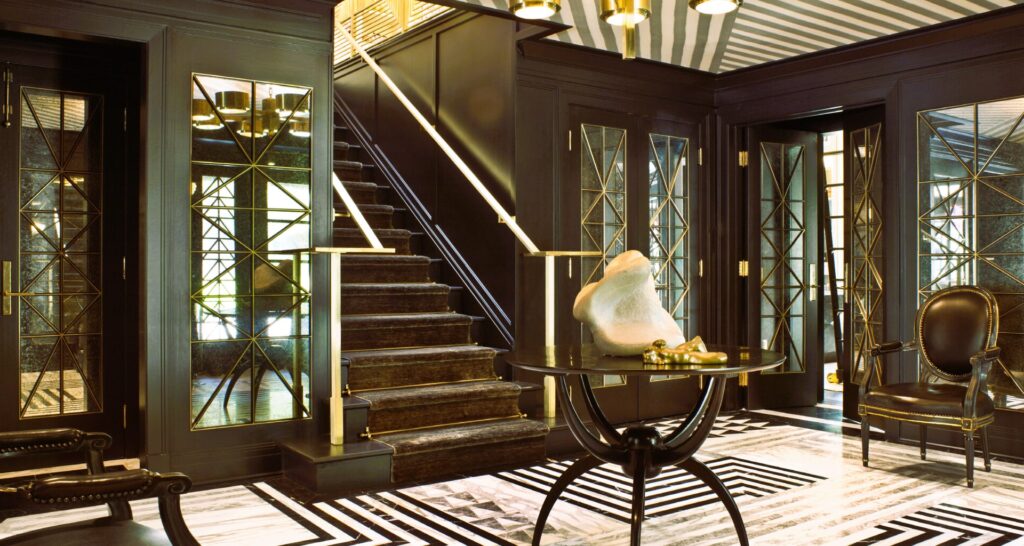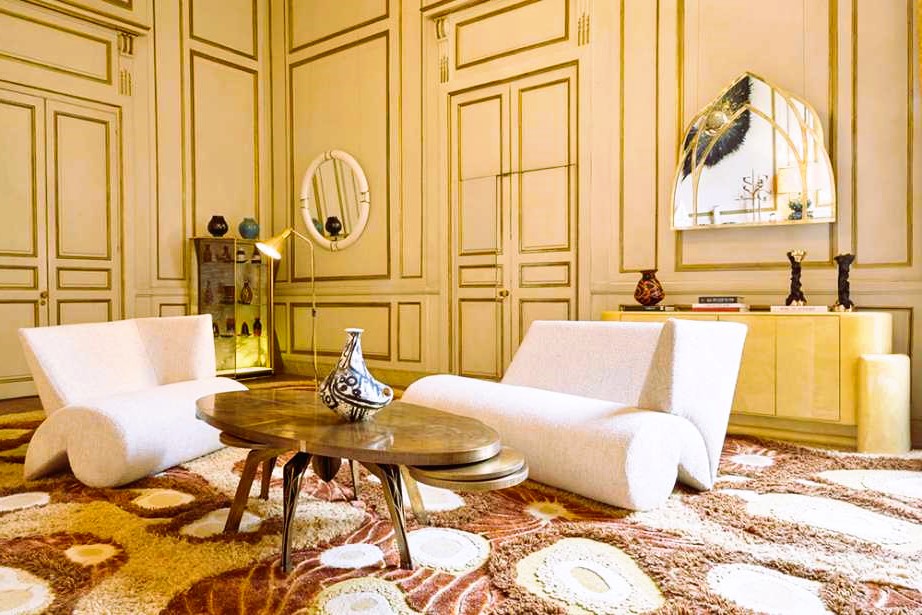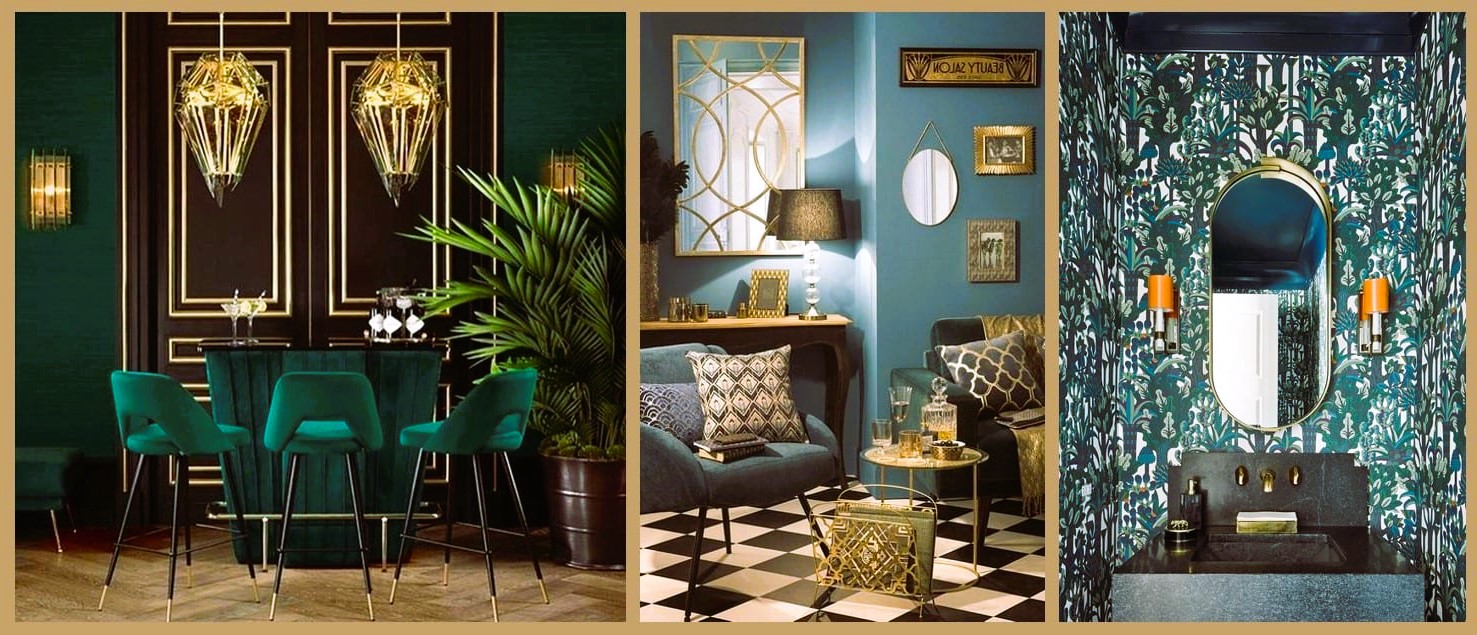In the ever-evolving landscape of interior design, certain styles stand the test of time and resurface to captivate a new generation. Among these enduring styles, the Art Deco movement holds a special place. Originating in the early 20th century, Art Deco is characterized by its opulence, geometric patterns, and bold use of materials. Today, a resurgence of interest in this glamorous design has sparked an Art Deco revival that brings the elegance of the past into the modern era.
Origins of Art Deco:
The Art Deco movement emerged in the aftermath of World War I, reaching its zenith in the 1920s and 1930s. It was a response to the austerity of the war years, embodying a desire for luxury, glamour, and a departure from traditional design aesthetics. Art Deco drew inspiration from various sources, including ancient Egyptian art, Cubism, and the machine age, resulting in a unique and eclectic style.
Key Elements of Art Deco:

- Geometric Shapes: Art Deco is renowned for its use of geometric shapes, including chevrons, zigzags, and stepped patterns. These shapes are often incorporated into furniture, architecture, and decorative elements, creating a sense of symmetry and precision.
- Luxurious Materials: The use of lavish materials is a hallmark of Art Deco design. Materials such as marble, lacquer, stainless steel, and exotic woods were employed to convey a sense of opulence and sophistication.
- Bold Colors: Vibrant and bold colors characterize Art Deco interiors. Rich jewel tones like emerald green, sapphire blue, and ruby red are often paired with metallic accents, creating a luxurious and visually striking environment.
- Sunburst Motifs: The sunburst motif, symbolizing energy and optimism, is a recurring theme in Art Deco design. This motif appears in furniture, mirrors, and decorative elements, adding a sense of dynamism to the space.
- Streamlined Furniture: Art Deco furniture is known for its streamlined and symmetrical forms. Chairs and sofas often feature curved arms, while tables and cabinets boast smooth, sleek surfaces. The integration of contrasting materials, such as chrome and lacquer, is a common feature.
- Exotic Influences: Art Deco drew inspiration from global influences, incorporating exotic motifs from Africa, Asia, and the Middle East. This infusion of diverse cultural elements contributed to the eclecticism that defines the style.
Art Deco Revival in Modern Design:
In the 21st century, there has been a notable resurgence of interest in Art Deco design. Contemporary designers and homeowners are drawn to the glamour, sophistication, and timeless appeal that Art Deco offers. The revival of this style is evident in both residential and commercial spaces, where elements of Art Deco are seamlessly integrated into modern interiors. For creating a relaxing bedroom, read on for our tips and design ideas.
How to Incorporate Art Deco into Modern Spaces:

- Statement Furniture: Invest in key pieces of furniture that exhibit Art Deco characteristics. Consider a statement sofa with streamlined curves, a lacquered coffee table, or a sunburst mirror as focal points in your space.
- Bold Colors and Patterns: Embrace the bold color palette and geometric patterns synonymous with Art Deco. Incorporate these elements through wallpaper, upholstery, or accessories to infuse a sense of drama and glamour.
- Metallic Accents: Introduce metallic accents such as gold, chrome, or brass to evoke the luxurious essence of Art Deco. These accents can be featured in lighting fixtures, furniture hardware, and decorative accessories.
- Art Deco Lighting: Lighting is a crucial element in Art Deco design. Choose fixtures with geometric shapes, frosted glass, or intricate metalwork to illuminate your space with an Art Deco flair.
- Mirrored Surfaces: Mirrors with sleek, geometric frames are a classic Art Deco element. Incorporate mirrored surfaces in furniture, decor, or wall art to add a touch of glamour and visually expand your space.
Standards and Influences:
As with any design movement, understanding standards and influences is vital for creating an authentic and harmonious interior. Platforms like Wikipedia and provide valuable insights into the history, characteristics, and standards of Art Deco design. By referencing these sources, designers and enthusiasts can ensure that their Art Deco revival is rooted in a genuine appreciation for the style.
The Art Deco revival is a testament to the enduring allure of this glamorous design movement. By seamlessly blending the opulence of the past with the functionality of the present, the Art Deco revival brings a touch of timeless elegance to contemporary interiors. Whether through statement furniture, bold colors, or luxurious materials, embracing Art Deco allows for a sophisticated and visually stunning design that stands the test of time.
